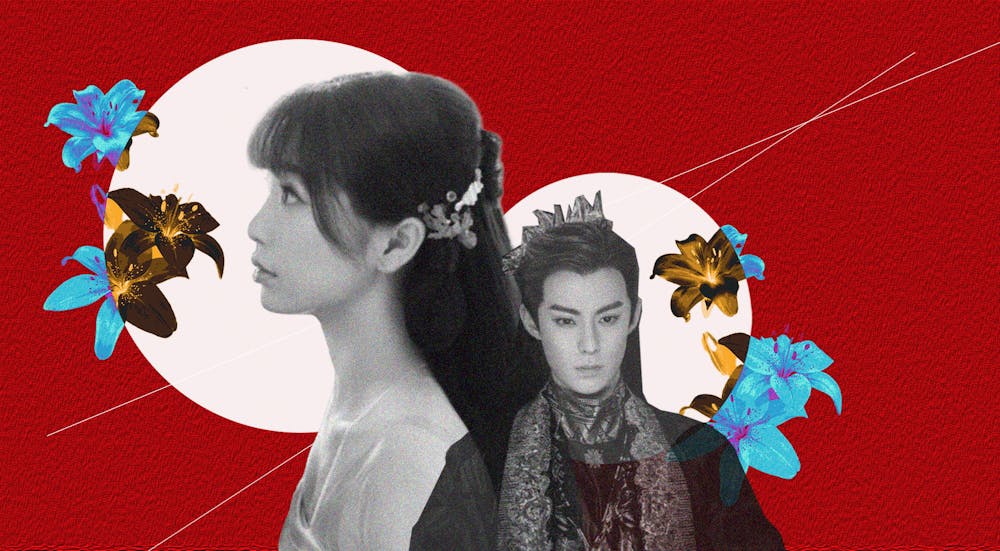In the heat–stricken summers of China during my middle school years, I would snuggle up alongside my grandmother while watching her favorite Chinese dramas. We’d sit on her balcony that overlooked the bustling city, guzzling cold Yakults down our throats while growing frustrated over the ad breaks that chimed in at the most inopportune times.
Returning home to the United States meant rerouting back to Gossip Girl or Jane the Virgin, or whatever else was in my Netflix catalog. But I always found myself wanting nothing more than to relive those summers—to find myself reading the poorly translated subtitles of another C–drama.
What I’ll say is simple: From my lifetime of consuming both types of shows, C–dramas far surpass American TV shows in almost every aspect.
In the world of the C–drama, plots gracefully unfold in 40–minute episodes, with a series typically spanning 30 to 40 episodes in just one season. This deliberate pacing allows for more thorough plot development and avoids the hollowness that can come with hasty narratives, especially helpful for slow–burn romance plots. Love at Night, one of the most popular C–dramas of 2021, chronicles the relationship between a career–oriented woman and her boss, slowly forging a romance between the two that is replete with miscommunication and avoidant attachment.
The two leads initially attempt to stifle their feelings for one another, exchanging lustful stares across the conference table and rescuing each other in times of trouble. But it is only in the 16th episode that the two leads confess their feelings to each other, culminating in a steamy, long–awaited makeout session. From then on, the show details how the two leads navigate their love, workplace politics, and of course, inevitable roadblocks in their relationship, such as jealous ex–partners and corporate threats.
C–dramas are a clear deviation from Western shows, which struggle to deliver well–rounded plots. Often spanning multiple seasons with around ten to 25 episodes per season, it’s easy for viewers to lose interest or forget storylines during long hiatuses between seasons, which trivializes built–up romantic tension between characters. In shows like Grey’s Anatomy, for example, characters enter and exit relationships like bathroom stalls—dating friends, friends of their friends, friends of their step–siblings, and even their own step–siblings (exhibit A: Maggie and Jackson).
The majority of the relationships are destined to be ephemeral, rendering slow–burn development pointless. Romances materialize haphazardly without explanation and end almost as soon as they’ve begun. Having numerous seasons necessitates the creation of too many romances and subplots that all become fuzzled into one giant pool of nothingness. As we’ve seen in Riverdale, producers may even stray from the original plot and resort to writing about “the epic highs and lows of high school football,” which isn’t very fitting for a show marketed as a murder mystery.
American shows also lack a distinct genre for which they are widely recognized. Sitcoms such as Friends and Parks and Recreation are certainly acclaimed and culturally rooted in television, but sitcoms are not exclusive to only American TV. C–dramas, on the other hand, are definitively known for a particular genre that no other nation’s shows can replicate: xianxia. Xianxias are primarily focused on Chinese fantasy realms and follow Taoist and Buddhist philosophies, featuring characters that practice magic and martial arts in an effort to achieve mortality. Characters in a xianxia are also adorned with attire called guzhuang, which is influenced by historic Hanfu clothing. Notable xianxias such as The Journey of Flower, Love and Redemption, and The Untamed are all set in areas with antiquated Chinese architecture and landscapes. These locations and backdrops are designed to reflect the elegance of old China, showcasing pagoda rooftops, ornate decorations, and terraced altars. Stories of old Chinese dynasties are well–integrated within plots, immersing viewers in a world of emperors, warring states, and ancestral Chinese customs.
And of course, who could forget about OSTs (original soundtracks), for which C–drama producers spend countless hours curating music or inviting artists to compose exclusive songs? Because of this, songs perfectly evoke the intended atmosphere and mood of a scene. These songs are also used repetitively over the course of the show, with each song correlating to a specific emotion; there are rarely moments when a song is too inappropriate, too loud, or too unfitting for a scene.
American shows, however, almost rarely use their own soundtracks, rather opting for popular tunes that are already on the market. Because of the costs of purchasing the rights to use existing songs, which can be upwards of $25,000, shows pick short–term licenses for a cheaper price. But when shows are taken off air, they sometimes decide to no longer continue paying for song rights, which causes the songs that originally aired in the TV show to either be absent or replaced by other songs. This scenario is what happened to “I Don’t Want to Wait” from Dawson’s Creek, the pivotal theme song that was overridden with “Run Like Mad” by Jann Arden—a decision that was lambasted by several angry fans.
Of course, C–dramas do fall short in some aspects compared to American shows. Most notably, censorship is rampant. The Untamed, which has racked up over ten billion views worldwide, is based on a novel that contained sex scenes between the two male main characters. But due to China’s harsh censorship rules, the show only flirts with homoeroticism, signaled through romantic facial expressions and subtle gestures. On the whole, C–dramas are also much more conservative with sex scenes—sexual intimacy is implied rather than shown. This sort of censorship can reinforce the idea that sex is taboo or inappropriate for public discussion, which perpetuates feelings of shame and guilt that come with natural human behaviors.
However, sexual censorship does lead to shows that are more romance–focused rather than sex–focused, which might appeal more to viewers who prefer to avoid explicit sexual content on screen. Especially in American media, sex scenes often unnecessarily exploit actors and actresses, causing much discomfort and anxiety. For me, I truly appreciate that C–dramas don’t have sex scenes, because that means that I can continue watching them alongside my grandmother without any awkwardness.
C–dramas not only taught me how to love TV shows again, but also reignited my appreciation for my own culture and showed me that slow burn romance still exists in this world. And best of all, along with traditional platforms such as iQIYI and Viki, American streaming companies, such as Netflix, have begun onboarding these shows, further increasing access to them.
Although I haven’t seen my grandmother in four years, she has forever instilled a passion for C–dramas in me. For viewers like me who are sick of Grey’s Anatomy and Riverdale, C–dramas are what you should be enjoying on these warm summer nights.






